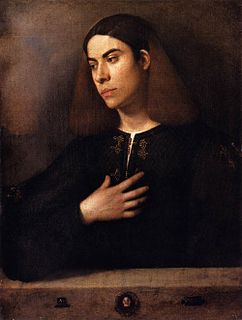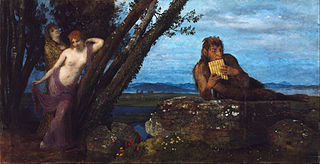 W
WAdoration of the Shepherds is a 1539-1540 oil on poplar panel painting by Bronzino, now in the Museum of Fine Arts in Budapest, Hungary.
 W
WThe Adoration of the Shepherds or the Nativity is a 1490 painting by the Flemish painter Gerard David. It is now held in the Museum of Fine Arts in Budapest.
 W
WThe Chess Players is an oil on canvas painting by Cornelis de Man, created c. 1670, now in the Museum of Fine Arts in Budapest, Hungary as Inventory Number 320. It entered the collection in 1871.
 W
WThe Christ Child Distributing Bread to Pilgrims is a 1678 oil on canvas painting by Bartolomé Esteban Murillo, now in the Museum of Fine Arts in Budapest. The pilgrim shown with a book is thought to be a portrait of Canon Justino de Neve.
 W
WThe Esterhazy Madonna is an oil on canvas painting by Raphael, created c. 1508, held at the Museum of Fine Arts in Budapest, in Hungary. It was stolen on the night of 5 November 1983, along with other works by Raphael, Giorgione, Tintoretto and Tiepolo - all the works, including this one, were recovered by the Italian Carabinieri in an abandoned Greek convent near Aigio.
 W
WEsther and Mordecai is a 1685 oil on panel painting by Arent de Gelder, a pupil of Rembrandt. It is now in the Museum of Fine Arts in Budapest.
 W
WThe Farmers' Lunch is one of the earliest paintings by the Spanish artist Diego Velázquez. Painted in oil on canvas in 1617, it combines a still life of food and drink with a depiction of three comic farmers, whose physiognomy the artist studies closely. The composition shows a younger man gesturing with his right hand to reinforce the story coming from his half-open lips, and an older man listening attentively while holding his cup up to a woman so she can refill it with wine. The still life includes fish, bread, a carrot, a lemon, and a copper vessel.
 W
WHoly Family with the Infant Saint John the Baptist is a c.1668-1670 oil on canvas painting by Murillo, now in the Museum of Fine Arts in Budapest.
 W
WJael and Sisera is a painting by the Italian Baroque artist Artemisia Gentileschi, executed around 1620.
 W
WJoseph's Dream is a 1650-1655 oil on canvas painting by Barent Fabritius and other artists in Rembrandt's studio. It is now in the Museum of Fine Arts (Budapest), which purchased it in 1885 from Alois Hauser the Elder's collection in Munich. It had previously been auctioned in Amsterdam in 1755.
 W
WThe Knifegrinder is an 1808-1812 easel painting by Francisco de Goya, which is now in Budapest.
 W
WLamentation of Christ is a circa 1540 panel painting of the common subject of the Lamentation of Christ by the Dutch Renaissance painter Maarten van Heemskerck in the Museum of Fine Arts, Budapest.
 W
WThe Martyrdom of Saint Andrew is a 1628 painting by Jusepe de Ribera.
 W
WMerry Company is a c.1620-1622 painting by the Dutch artist Willem Pieterszoon Buytewech, now in the Museum of Fine Arts in Budapest. It belongs to the merry company sub-genre of the genre painting.
 W
WMucius Scaevola before Lars Porsenna is a c.1618-1620 painting by Rubens and his pupil Antony van Dyck. It was painted for the Spanish royal court and remained in the royal collection in Madrid until the second half of the 18th century. It was then acquired by prince Kaunitz of Vienna and then in 1820 for the Esterhazy collection. It is now in the Museum of Fine Arts (Budapest). Its subject is drawn from Livy 2:12 and its account of Mucius Scaevola's bravery before Lars Porsenna after the former's failed attempt to assassinate the latter.
 W
WThalia is a c.1546 painting by Michele Pannonio, signed by the artist and produced for the 'studiolo' in Belfiore, begun by Lionello d'Este in 1447 and completed by his brother Borso in 1463. After the palace's destruction by fire in 1632 its paintings were dispersed - Thalia is now in the Museum of Fine Arts in Budapest.
 W
WNursing Madonna with an Angel is an oil painting on panel by Correggio, painted around 1524 and now in the Museum of Fine Arts in Budapest. It measures 68.5 by 87 cm and belongs to the Nursing Madonna or Madonna Lactans genre.
 W
WPenitent Magdalene is a 1576–1578 painting by El Greco depicting Mary Magdalene, produced during his first period in Toledo and showing the major influence of Titian on him at that time. It is now in the Museum of Fine Arts in Budapest.
 W
WThe Portrait of a Gentleman in a Fur is an oil painting by Paolo Veronese measuring 140 centimetres (55 in) by 107 centimetres (42 in), dated to circa 1550–1560 and now in the Galleria Palatina in Florence. Another version exists at the Museum of Fine Arts in Budapest. The painting's subject is unknown: Daniele Barbaro has been suggested, but this is contradicted by a confirmed portrait of him held at the Rijksmuseum in Amsterdam.
 W
WPortrait of a Young Man or Portrait of a Youth is a c.1508-1510 painting, attributed to Giorgione and now in the Museum of Fine Arts in Budapest. Some have instead attributed it to Giorgione's collaborator Giovanni Cariani.
 W
WPortrait of a Young Man Wearing Lynx Fur, Gentleman with a Lynx Pelt or Portrait of a Man is a 1560 painting by Paolo Veronese, produced during his stay in Rome and showing similarities to his Baptism of Christ and The Anointing of David. It is now in the Museum of Fine Arts in Budapest.
 W
WPortrait of Pietro Bembo, also called Portrait of the Young Pietro Bembo, is an oil painting by Italian artist Raphael. Completed ca. 1504, the painting hangs in the Museum of Fine Arts in Budapest.
 W
WThe St Peter Martyr Altarpiece or Minor San Domenico Altarpiece is a altarpiece in tempera and gold on panel by Carlo Crivelli, executed c. 1476. Its central panel of the Madonna and Child, signed "OPVS CAROLI CRIVELLI VENETI", is now in the Museum of Fine Arts in Budapest. The altarpiece's other panels were seen in Rome by Luigi Lanzi in 1789 before being moved to Florence with the Rinuccini family. In 1868 it moved from the Demidov collection to the National Gallery in London, where they still hang.
 W
WThe Satyr and the Peasant is one of seven paintings by the Flemish painter Jacob Jordaens on the tale of the Satyr and the Peasant from Aesop's Fables. One version is now in the Royal Museum of Fine Arts of Belgium in Brussels, another in the Alte Pinakothek in Munich.
 W
WThe Self-portrait of Giorgione is a possible self-portrait by the Italian painter Giorgione, now in the Museum of Fine Arts in Budapest. It is not universally accepted as an autograph work but – if it is – it is thought to be based on the c.1509-1510 Self-portrait as David now in the Herzog Anton Ulrich Museum.
 W
WThe Sermon of Saint John the Baptist is a painting of 1566 by Pieter Bruegel the Elder in the Museum of Fine Arts in Budapest.
 W
WSleeping Girl or Young Woman Sleeping is an oil on canvas painting by an unknown 17th century artist active in Rome, sometimes dated to c.1620 and previously attributed to Theodoor van Loon or Domenico Fetti. It is now in the Museum of Fine Arts, which acquired it from the Esterházy family collection. Its catalogue number is 609.
 W
WSpring Evening was an oil on panel painting completed in 1879 by the German Symbolist painter Arnold Böcklin which belongs in the collection of the Museum of Fine Arts, Budapest.
 W
WSaint Andrew is a 1635-1640 painting by Francisco de Zurbarán of the apostle Andrew. Since 1949 it has been part of the collection of the Museum of Fine Arts in Budapest, Hungary.
 W
WThe Tornabuoni Altarpiece is a tempera on panel painting by Domenico Ghirlandaio and his studio as the high altarpiece for the Tornabuoni Chapel in Santa Maria Novella. It was begun around 1490 and completed around 1498, four years after the painter's death. It is now split between several museums, with the central panel and two others now in the Alte Pinakothek in Munich.
 W
WThis painting's Spanish title "La Aguadora" has various translations in English, The Water Bearer, Young Woman with a Pitcher, or the Water Carrier. It is an oil on canvas painting by Francisco de Goya, now in the Museum of Fine Arts in Budapest.
 W
WThe Wrestlers is a large 1853 painting by Gustave Courbet, now in the Museum of Fine Arts in Budapest. It shows two men engaged in 'French wrestling', inspired by Greco-Roman wrestling. Documents reveal that it shows a match in the former hippodrome on the Champs-Élysées in Paris. His choice of such a huge canvas inspired Alexandre Falguière's 1875 The Wrestlers.